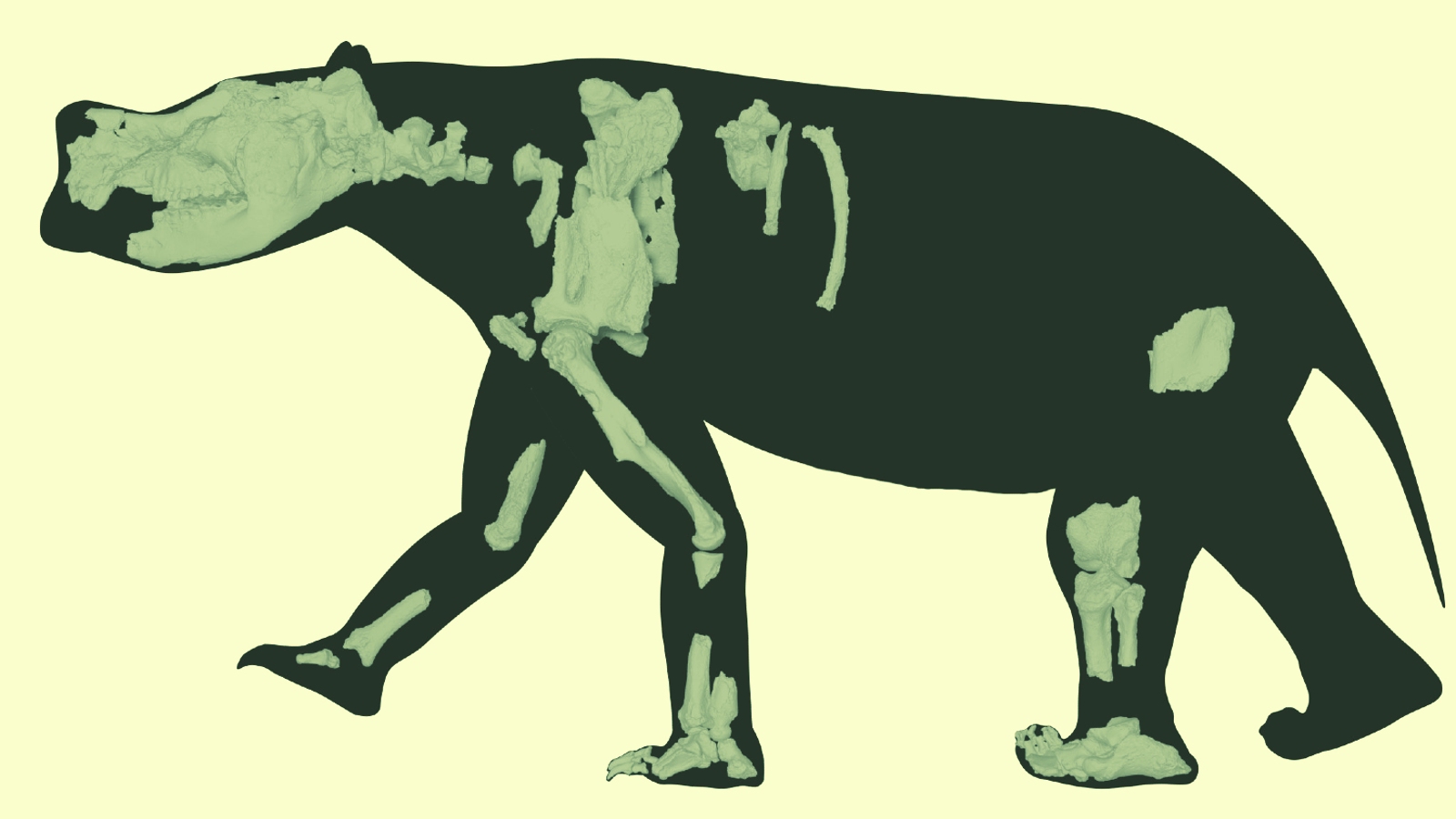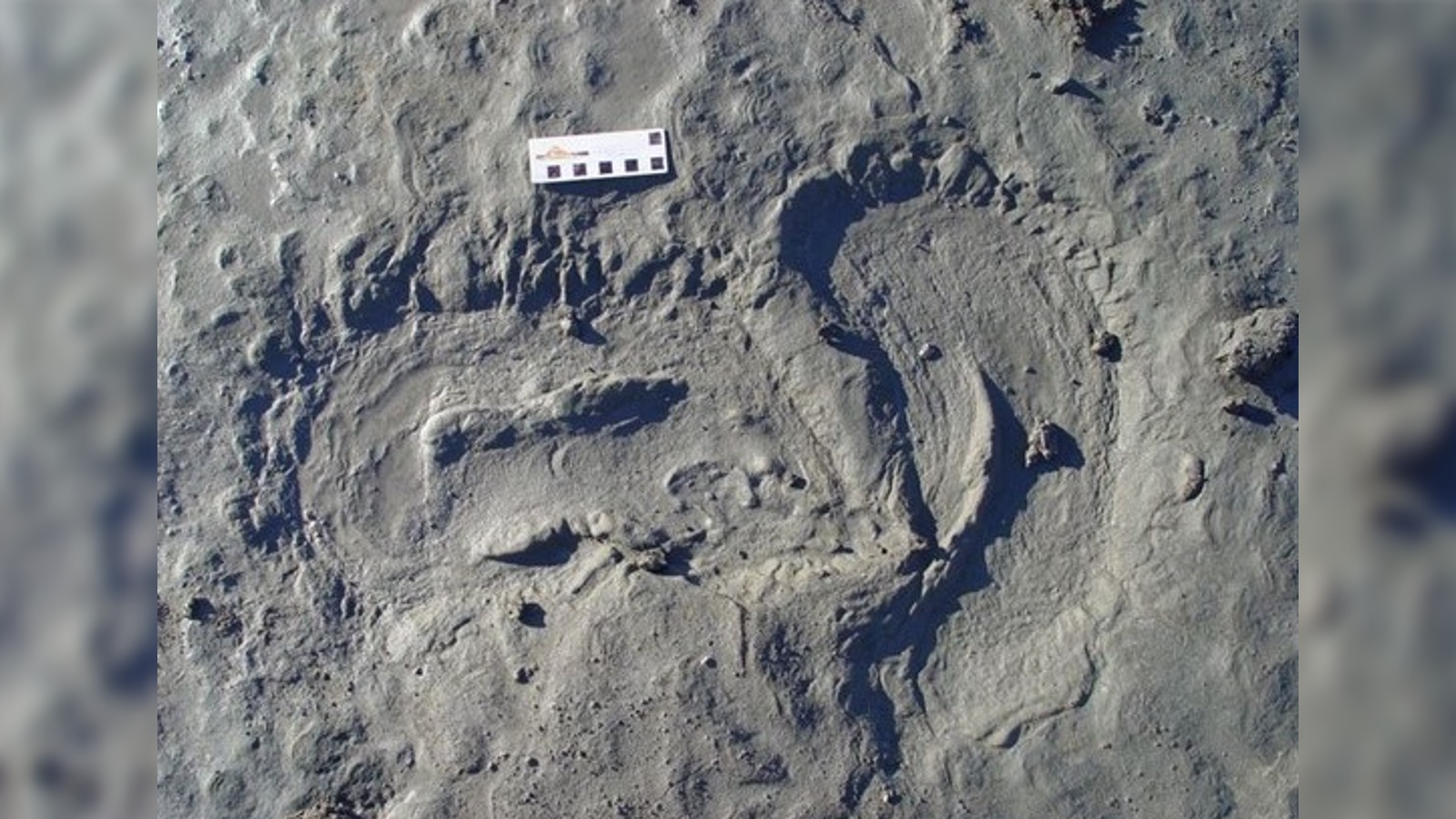Quarter-ton marsupial that ambled across Australia 3.5 million years ago was 'unlike anything alive today'
The newly described extinct species is closely related to the largest marsupial to ever roam the Earth.

Scientists have uncovered the remains of an ancient, quarter-ton marsupial that once walked vast distances across Australia. The new fossils help shed light on mysteries surrounding other, even more gigantic extinct marsupials.
The newly described species, Ambulator keanei, had a body plan similar to a bear or rhinoceros. It likely weighed around 550 pounds (250 kilograms) and was around 3.3 feet (1 meter) tall at the shoulder. A. keanei belongs to the family Diprotodontidae, which once included giant marsupials that were loosely related to wombats. The largest species in this group, Diprotodon optatum, grew to the size of a large car and weighed up to 3 tons (2.7 metric tons).
Scientists unearthed the partial skeleton of A. keanei in 2017 from an eroding cliff face at the Kalamurina Wildlife Sanctuary in South Australia. The bones date to around 3.5 million years ago during the Pliocene epoch (5.3 million to 2.6 million years ago).
In a new study, published May 31 in the journal Royal Society Open Science, researchers used 3D computer scans of the bones to create a model of what A. keanei may have looked like. The model suggests that the marsupial may have walked differently to similar-size animals that are alive today, which may have helped it to survive in a rapidly changing ecosystem.
Related: Ancient marsupial sabertooth had eyes like no other mammal predator

"Most large herbivores today such as elephants and rhinoceroses are digitigrade, meaning they walk on the tips of their toes with their heel not touching the ground," study lead author Jacob van Zoelen, a doctoral candidate at Flinders University in Australia, said in a statement. "Diprotodontids are what we call plantigrade, meaning their heel-bone [calcaneus] contacts the ground when they walk, similar to what humans do."
As a result, A. keanei would have conserved energy by evenly distributing its weight when walking, but its gait would have made running more difficult, he added.
Sign up for the Live Science daily newsletter now
Get the world’s most fascinating discoveries delivered straight to your inbox.
Its efficient strides may have enabled the newly described species to walk extremely long distances — a huge benefit because, at the time, Australia's lush woodland and grassland areas were transitioning to hot and arid deserts, forcing herbivorous animals like A. keanei to travel farther between food and water sources, study researchers wrote in an article for The Conversation.
The secret to A. keanei's efficient walking was a joint in its forearm wrists that gave it a "heeled hand," van Zoelen said. The joint meant that "the digits [on the hand] became essentially functionless and likely did not make contact with the ground while walking."

This could help explain a longstanding marsupial mystery: Scientists have found fossilized footprints belonging to D. optatum, the largest ever marsupial, but the fossils don't have any toeprints. The new finding suggests this is because those toes never touched the ground.
A. keanei’s discovery may also help explain how D. opatum grew so big. The newfound marsupial’s even weight distribution may also have occurred in D. opatum and could have been a key factor in how D. opatum grew so large, the new research hints.
The new find is important because until now, most knowledge about Diprotodontids came from jaw and teeth fossils, which has left big knowledge gaps about the family. They are very distantly related to other marsupials, which means it is hard to infer anything about them from living species.
"There is nothing quite like them today," van Zoelen said. But findings like this will help improve our understanding of these extinct beasts, he added.

Harry is a U.K.-based senior staff writer at Live Science. He studied marine biology at the University of Exeter before training to become a journalist. He covers a wide range of topics including space exploration, planetary science, space weather, climate change, animal behavior and paleontology. His recent work on the solar maximum won "best space submission" at the 2024 Aerospace Media Awards and was shortlisted in the "top scoop" category at the NCTJ Awards for Excellence in 2023. He also writes Live Science's weekly Earth from space series.









